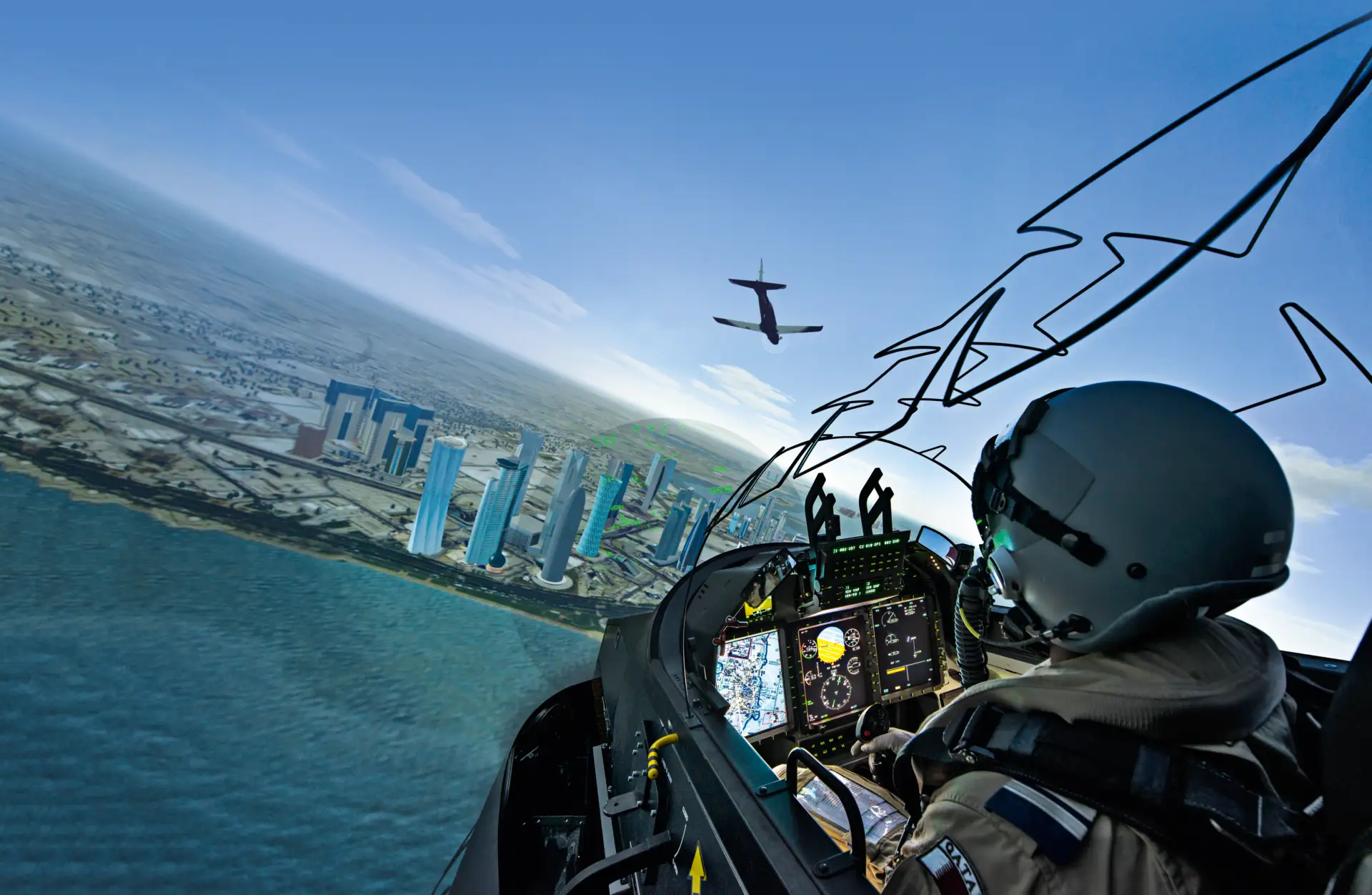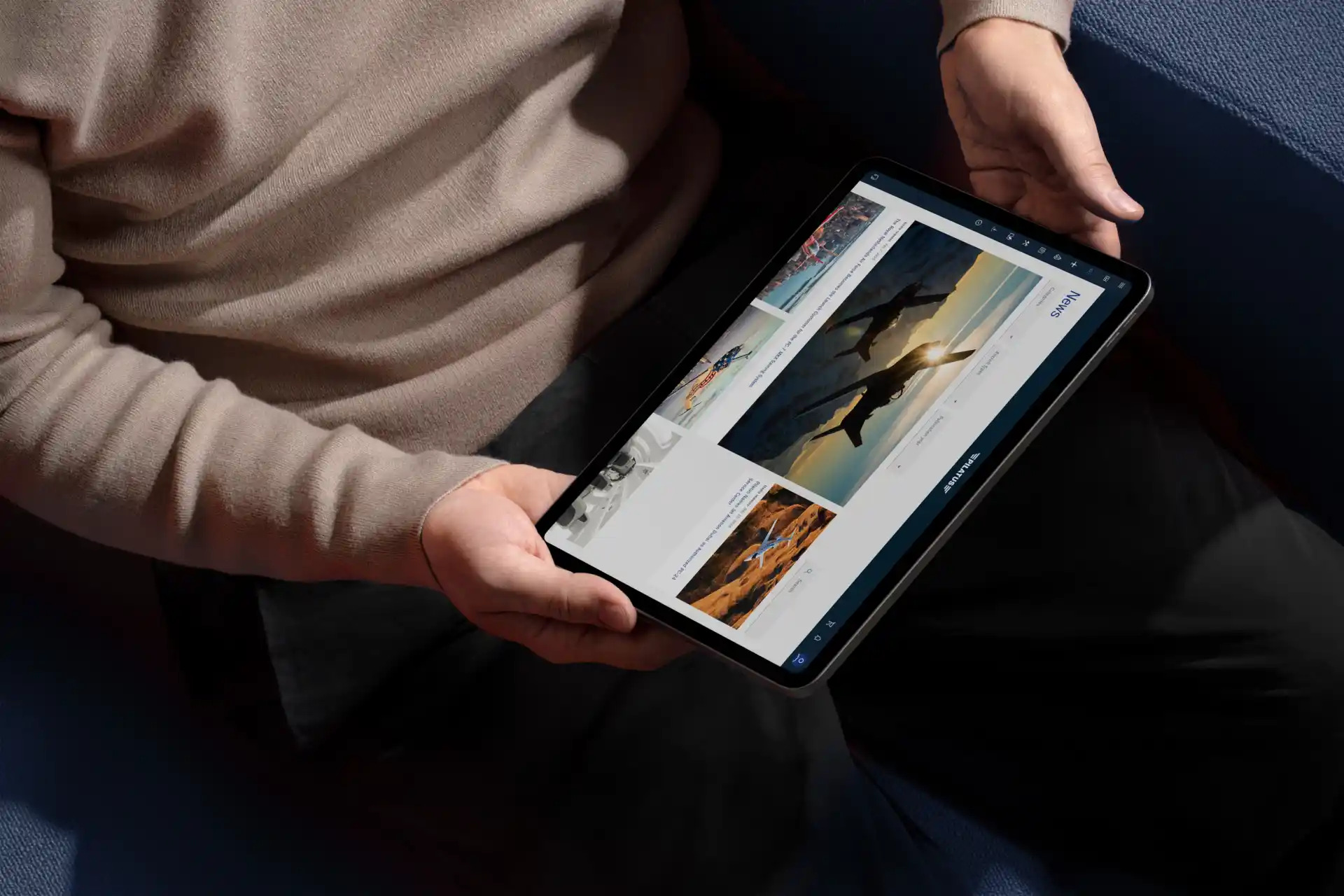Pilatus develops and produces entire training systems, not just aircraft, in its Government Aviation Business Unit. Simulators and the associated software are an important part of the system required for efficient air force pilot training. Pilatus develops, configures and tests its simulators in Stans before they are accepted by the customer and deployed at locations around the world.
Military pilots have to complete several stages of training before graduating as fighter pilots. The integrated Pilatus training system therefore includes – besides the aircrafts PC-21, PC-9 M and PC-7 MkII – various ground based training products such as manuals, check lists, computer based training (CBT), mission planning and mission debriefing software.
Simulators are another important element. These highly complex systems are designed to provide a virtual environment in which pilots can practise a variety of missions in a safe environment on the ground with realistic exposure to the kind of scenarios they may find themselves in when flying the aircraft. Flights are supervised by an instructor who uses the system to simulate any number of different circumstances and check correct pilot reaction.
Development in Stans
Each air force has its own individual pilot training programme. With that in mind, Pilatus develops custom training systems to meet each customer’s specific requirements. Whereas Pilatus used to commission the majority of the work to suppliers to produce and integrate most simulator components, these days all the software directly related to the aircraft is now developed in Stans. The hardware, as well as other software components, is still made to our specifications by various suppliers, ready for integration by Pilatus in Stans.
A highly specialised team of employees from 16 different countries based in Stans is responsible for developing the software and configuring such training systems. Tasks range from construction of the cockpit to realistic reproduction of noise during simulated flight. The software which commands the entire aircraft systems simulation – the hydraulics, electrics, realistic flight commands and procedures for all mechanical systems – is programmed in Stans. The visual systems – 3D models of the geographical environment for projection onto a screen inside the simulator – are also developed in Stans. Only components unrelated to the aircraft, such as those used for weather simulations, for example, are sourced from external suppliers.
Win-Win Situation
Every customer has different pilot training objectives. Keeping development in Stans puts Pilatus in an optimal position to react to these differing requirements and provide individual solutions. This saves both valuable time and costs. There are huge benefits to customers: whereas other manufacturers supply simulators “off the shelf”, with pre-defined components available for order within a building block system, here at Pilatus little is pre-defined, while a lot is developed to customer specifications. As a result, we can offer a high degree of flexibility in reacting to requests for modifications.
Over Two Years of Development Work
Roberto Fontana, Head of our Training Systems department, explains that end-to-end development – from the moment the order is placed through to final delivery – takes around two years: “During the first year, the project is very conceptual. Following an evaluation of needs, we work on drawings, ideas, graphics and other documents to obtain a thorough understanding of the customer’s wishes and develop an initial design.” Once these cornerstones have been defined, we move onto the implementation phase, focusing on hardware such as the cockpit, screens and computer. These are sourced from various suppliers and tested in Stans with input from our in-house engineers, designers and pilots.
Close Customer Involvement
The customer is consulted regularly all through the development programme, and is invited to attend project review meetings. “Things get easier after the hardware arrives. It remains a complex task, of course, but once we have something concrete to see and touch, it’s easier for the customer to provide targeted support to the development process”, explains Roberto Fontana.
The 3D database for projection onto the simulator screen is also defined and developed in conjunction with the customer. The entire virtual environment of the country in which the air force is based is generated in a detailed 3D format, as specified by the customer. Our developers visit the country, take photographs, and then program the data into the virtual visual surroundings back in Stans.
Local Support
Delivery goes ahead once the training system has been developed, tested and initially accepted. At this stage, Pilatus employees are seconded for around four months to install the system at the customer site and provide project support through to final handover. That support naturally extends beyond initial system rollout to the provision of repairs when required, spare parts and software updates. All this ensures optimum system availability.
Growing Number
There are currently almost 60 Pilatus simulators in use around the world. The number has grown steadily since the first simulator was developed 15 years ago. Pilatus has made a name for itself in the field of training systems. It offers a unique service in that these systems are custom-built.

